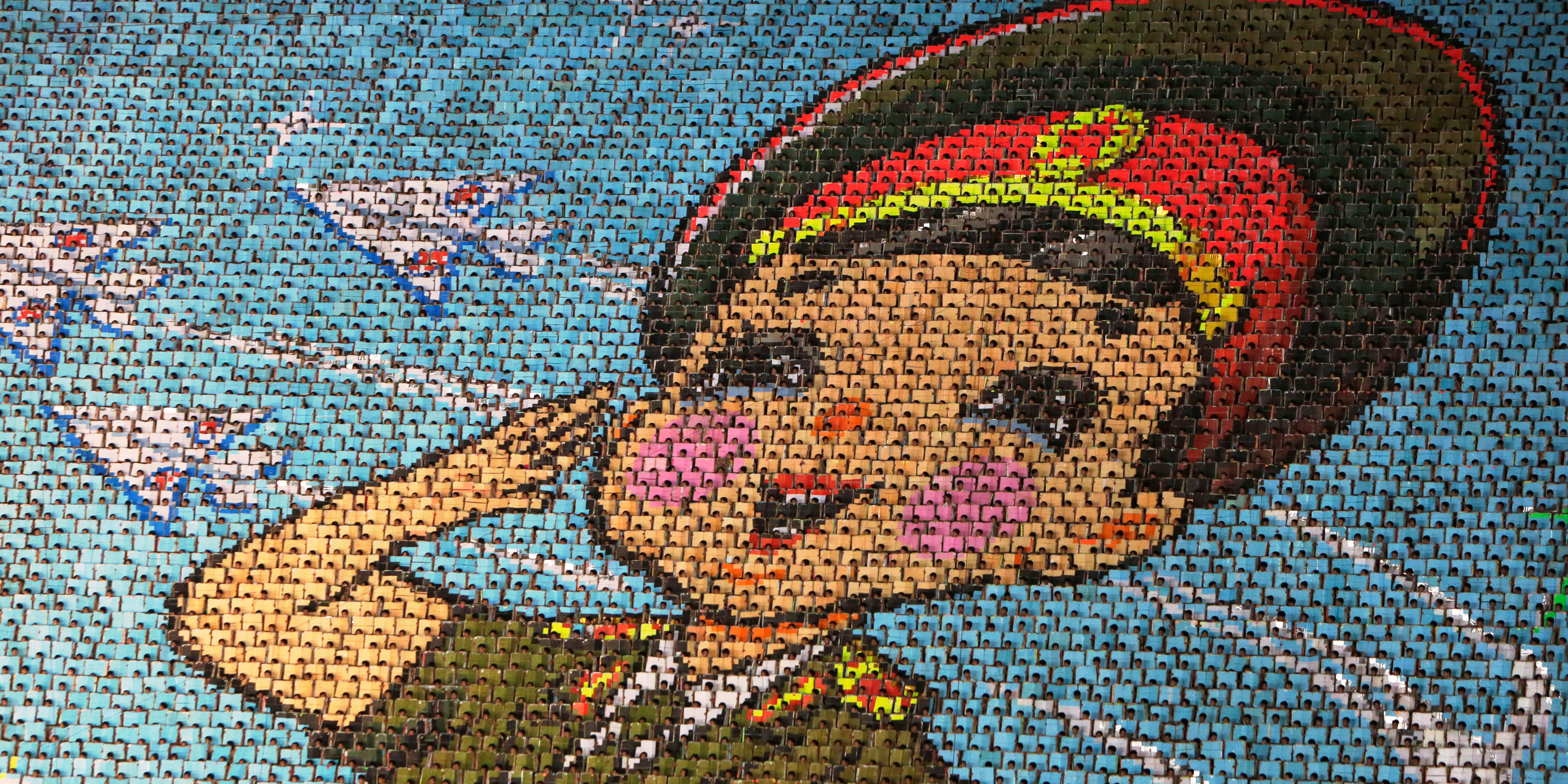- Most North Korean children grow up with the understanding that they will serve in the military. Militaristic songs, tiny soldiers’ uniforms, and cartoon soldiers all serve to indoctrinate North Korean children.
- “From a very young age, we are taught that it is an honor to be General Kim’s army. Almost all of the education of children is to impose allegiance to the dictator,” North Korean refugee Hyun Lee told INSIDER.
- North Korea has 1.2 million active-duty soldiers in its military, the fourth-largest in the world.
- Visit INSIDER’s homepage for more stories.
North Korea’s military is the fourth-largest in the world, according to the Council on Foreign Relations, with 1.2 million active-duty soldiers. Military service is compulsory for most citizens; while many countries have conscription requirements, North Korean military indoctrination begins early.
“When I was young, I thought it was obvious I should become a soldier,” Hyun Lee, a North Korean refugee now living in the US, told INSIDER via email.
“Each element of North Korea’s student education instills a brainwashing idea of being loyal to Kim family in student’s mind,” he said. “Students should be the army to protect Kim family, to be loyal to them.”
In the US, by contrast, the military doesn’t typically begin recruiting until high school and those who choose to enlist swear to defend the US constitution, rather than to any particular leader.
Anna Fifield's book "The Great Successor: The Divinely Perfect Destiny of Brilliant Comrade Kim Jong Un" details the ways the regime indoctrinates children early on.
"I went to a nursery with a sign across the front saying 'Thank you, Respected General Kim Jong Un,'" she writes.
"Inside, it was decorated with cartoon raccoon soldiers holding rocket-propelled grenade launchers and sailor ducklings with machine guns.. The toddlers posed with plastic Kalashnikovs while visiting reporters took photos," Fifield writes.
Lee echoed that sentiment, saying, "From a very young age, we are taught that it is an honor to be General Kim's army. Almost all of the education of children is to impose allegiance to the dictator."

Lee's parents both served in the military, he said, but they didn't talk about their service "and I didn't ask about it," he wrote.
While some young people are exempt from military service - namely, students from special high schools like Pyongyang Foreign Language School, where Lee went to high school, children of high-level elites are required to go into what Lee called social military service.
Lee, for example, practiced martial arts in the military, and demonstrated before visiting foreign leaders to show off the skill and lethality of the Kim family's military.
Military prowess is baked into the Kim family's narrative; Kim Il Sung, the first leader of North Korea, built his mythic status in part on his prowess as a guerilla fighter against the Japanese army during its occupation of the Korean peninsula. And while Kim Jong Un didn't serve in the military, he pushed the country toward a military-first approach and conducted the first nuclear tests in 2006.
Kim Jong Un also avoided military service, but he is reported to have attended Kim Il Sung Military University in Pyongyang, where he studied "juche-oriented military leadership," according to Fifield's book. Juche is the North Korean concept of self-sufficiency.
Reaching back even further, Fifield notes that Kim Jong Un was called Comrade General - even by adults - from the time he was ten. She describes him as often wearing a child-sized general's uniform, too.
He's not the only one; many photos of Chairman Kim feature children - even toddlers - in military uniform.

And, as Lee described, North Korea's version of the Boy Scouts (albeit with a more militaristic mindset) sing a song about how they'll fight - and sacrifice themselves - for General Kim: "3 million boy scouts will be guns and bombs/ We will be guns and bombs for the General," the lyrics promise.

